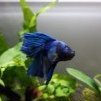-
Similar Content
-
- 6 replies
- 2207 views
-
UPDATED: Care guide for Amarinus Lacustris
By Rare Aqua,
- freshwater crab
- freshwater crabs
- (and 4 more)
- 0 replies
- 2220 views
-
UPDATED: Care guide for Amarinus Lacustris
By Rare Aqua,
- freshwater crab
- freshwater crabs
- (and 4 more)
- 0 comments
- 2086 views
-
- 19 replies
- 5294 views
-
- 2 replies
- 1345 views
-




Recommended Posts
Create an account or sign in to comment
You need to be a member in order to leave a comment
Create an account
Sign up for a new account in our community. It's easy!
Register a new accountSign in
Already have an account? Sign in here.
Sign In Now